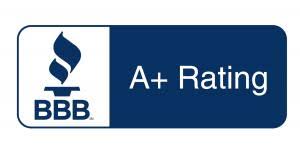We create strategies that eliminate as much debt as possible for all our clients who file bankruptcy
There is a common belief that bankruptcy is meant for people with too little income. While it is true that many people who file bankruptcy have lower or no income, a significant percentage of the clients we represent have incomes well over $50,000 per year — with some of our filers earning over $100,000 per year. In fact, many of these higher-income clients need bankruptcy more than clients who have low income. Why? There are a few reasons:
First, people with higher earnings are more at risk of aggressive collection activity, such as wage garnishments. New York has strong exemptions for certain kinds of income, such as social security and pension. And many people with jobs do not make enough to have their wages garnished, so they are in a sense “collection-proof.” But it is a near-certainty that anyone making over $50,000 will not escape paying some or all of their debts without legal help.
Second, many higher-income earners come to us during their peak earning years — typically their early 40s through late 50s — and they know that they will not be able to continue to earn as much in the future as they are now. They realize that if they are already struggling now to pay their bills, that struggle will only get worse as the years go by.
Third, we have observed generally that people making over $50,000/year feel much more guilty about filing bankruptcy. They have a hard time accepting that they need legal help to deal with their debts, and because many have such good credit, they are able to get themselves deeper and deeper into debt until the point where it is mathematically impossible for them to make even minimum payments.
If the household earnings of a prospective client are above the “median income” for their household size, then the client is generally not able to file chapter 7 bankruptcy. Instead, they will most likely have to file chapter 13 bankruptcy and pay something bank to their creditors. The exact amount is determined by a formula known as the “means testing.
In our opinion, the means testing needlessly complicates many cases, but unfortunately it is a reality that the lawyers and clients must deal with. However, if your means testing is done correctly, then your bankruptcy case will result in the lowest possible repayment to your unsecured creditors. In fact, there are strategies that can be implemented before the filing of your bankruptcy case to minimize the impact of the means testing. Only the most experienced bankruptcy lawyers are familiar with some of these concepts.
If your income is “above median,” then your bankruptcy case needs special attention
If your income exceeds the median income in New York for your family size, then your means testing form is more likely to be scrutinized by the Office of the United States Trustee and the chapter 13 trustee or chapter 7 trustee assigned to your case. We have helped hundreds of above-median income debtors work through the means testing issues in the bankruptcy process, and we are extremely aggressive in our approach.
While many chapter 7 cases can probably be handled by your “family attorney,” if your household income is close to or exceeds the state median, then it is important that the means testing calculations be handled by a bankruptcy attorney with experience in these types of cases. The means testing figures are adjusted periodically, and you can see the exact figures at the Unites States Trustee’s website.
The present median income figures for New York State are as follows:
Household of 1 $57,137 Household of 2 $72,642 Household of 3 $88,240 Household of 4 $105,550 For each additional household member, add $9,000.
A couple of things to keep in mind when reviewing these numbers: First, your household income will also include the income of your spouse, even if he or she is not filing bankruptcy with you. Second, the Court will require information about the income of anyone living in your household, even if they are not related. This includes the income of boyfriends, girlfriends, children, parents, and even roommates. Third, the goal in preparing the case should always be to present the household size in the most favorable way and to limit to the extent possible the impact of other household income.
The amount you pay back to creditors in Chapter 13 is influenced by a number of factors
What makes the means testing formula difficult is that it does not always take into account your real expenses. For some household budget expenses, you will only be given an “allowance,” which may be much less or much more than you actually spend. These allowances include food, clothing, utilities, vehicle expenses, and recreation. For other expenses, you will be given a dollar-for-dollar credit. These include mortgages, car loans, payroll deductions, and insurance.
The goal of the mean testing is to come up with a “disposable income” figure which is supposed to represent how much you can actually afford to pay creditors back. Unfortunately, this disposable income figure rarely represents the realities of a client’s situation, and your bankruptcy lawyer must come up with very specific arguments if they are going to lower your payments below what the means testing requires. We have been very successful in persuading the Trustee and the Court to make exceptions to the means testing formula on a case-by-case basis. We assure you that we always propose the absolute lowest payment we can under the means testing rules.







